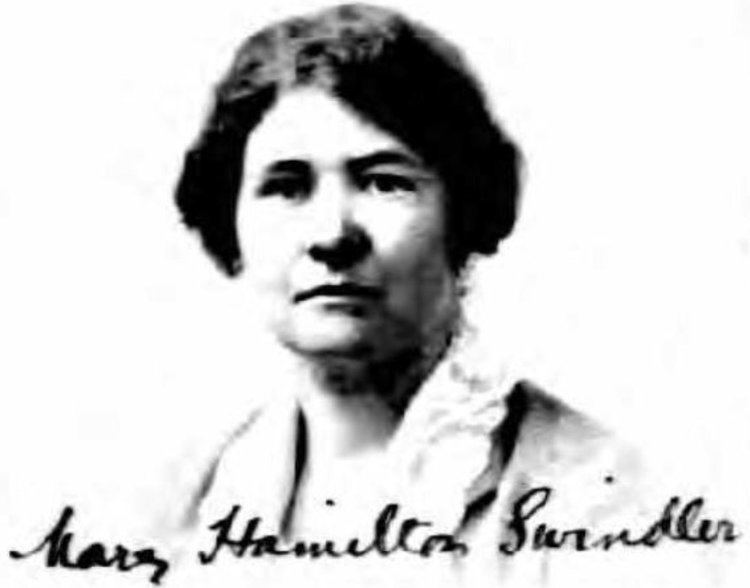Occupation Archaeology educator | Name Mary Swindler | |
 | ||
Parent(s) Harrison T. SwindlerIda M. Hamilton Residence Bryn Mawr, Lower Merion Township, Pennsylvania, United States Books Ancient painting, Cretan elements in the cults and ritual of Apollo | ||
Mary Hamilton Swindler (January 1, 1884 – January 16, 1967) was an American archaeologist and classical art scholar. She was an art historian at Bryn Mawr College as well as a professor of archaeology at various Universities in the United States. She participated in various archaeological excavations throughout the world.
Contents
Early life
Swindler was born in Bloomington, Indiana between January 1 – 3, 1884. She used the nickname "Mayme". Her parents were Harrison T. and Ida Hamilton Swindler. Swindler, when growing up, went to the public schools for children in Bloomington. Upon graduation from high school Swindler attended Indiana University in Bloomington, where she received her Bachelor of Arts degree in 1905 and her Master's degree in 1906. She specialized in Greek, Latin, and archaeology studies.
Bryn Mawr College awarded Swindler with a Greek fellowship in 1906-1907. She was awarded the Mary E. Garrett European Fellowship in 1909-1910 when she then attended her studies at the University of Berlin and American School of Classical Studies at Athens, Greece. She then returned to Bryn Mawr where received her Ph.D. degree in 1912 and then became a member of the Bryn Mawr faculty. Dorothy Burr Thompson, a renowned student of Bryn Mawr, was influenced by Swindler. Swindler worked with Thompson on ancient vases at the Bryn Mawr College Museum in the Mediterranean Section.
Mid life
Swindler obtained full professorship in Classical Archaeology in 1931. She was the editor in chief of the American Journal of Archaeology from 1932 to 1946. Swindler founded the Ella Riegel Memorial Museum for Archaeology, also known as the Classical and Near Eastern Archaeology Collection and the Ella Riegel Study Collection at Bryn Mawr College, after an archaeological expedition to Cilicia in Tarsus, Turkey (1934–38). Swindler was a professor of archaeology at Bryn Mawr College, the University of Pennsylvania and the University of Michigan at Ann Arbor. During the time she was a professor for the Universities she wrote books on early ancient art.
Later life and death
In the later 1940s and early 1950s Swindler went on excavations to Greece, Egypt, and Turkey. She worked at the Gordium archaeology site in 1951. Even though she retired in 1949, she continued to be involved with different archaeological sites. She was often called upon for consultation by the American Council of Learned Societies, Archaeological Institute of America, American School of Classical Studies, American Association of University Women, and Encyclopedia Britannica.
Swindler died on 16 January 1967 in Haverford, Pennsylvania of bronchopneumonia.
Awards and honors
Swindler was regarded as an authority on ancient Greek paintings. She received many honors and awards. Some of the notable ones are:
Legacy
Swindler was the first woman editor in chief of the American Journal of Archaeology (1932 – 1946), since its inception in 1885.
Societies
Works
Swindler wrote several books related to archaeology. Below are some of her works:
